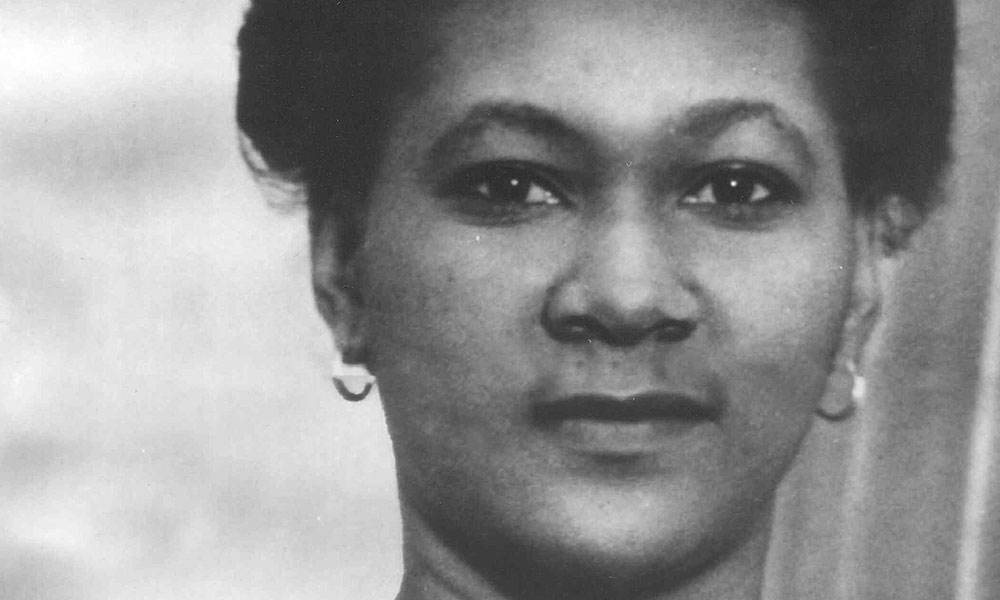Doris Esme Wall
.jpg)
Doris Esme Marshall was born on the 12th January 1909. She was the fourth daughter of Burchell Marshall and his wife Margaret Cannonier. Marshall was a business entrepreneur who built the firm S.L. Horsford and Co. Ltd and Marshall Plantations.
As a child, Doris attended the small, private school conducted by Eliza Wattley. It was here that she started to show her love of music. At an early age she was sent to Penrhose College in Wales where she finished her education and became an accomplished pianist. Her return to St. Kitts meant a return to community involvement, and church activities.
In 1931, Doris Marshall married Eustace Llewellyn Wall of Montserrat. The wedding took place in Havana, Cuba where Wall was working at the time and Cuba was also the birthplace of their first child, Beatrice. However the young family returned to St. Kitts eight months later when Wall was called home to help with the family business. In due course the couple had another two daughters - Pamela and Marguerite.
As her daughters developed and matured, Doris Wall devoted time and energy to the teaching of piano and to the production of charity concerts and musical shows. Holidays in England and the USA fed her desire to experience musical events of a caliber rarely found in St. Kitts. Her passion for music infused the Wall household and as a result the Georgian House on South Independence Square Street echoed to the happy sounds of voices singing to her accompaniment on the piano.
Before long the community began to anticipate her stage productions. This was the age of the musical shows and Doris Wall presented them year after year. Patiently, methodically and with sensitivity, she nurtured the latent talents of her assistants and musical note by musical note she built productions that continued to enjoy high acclaim years after the final curtain had fallen. Perhaps the zenith was reached with her magnificent production of Gilbert and Sullivan’s The Mikado.
Doris Wall’s mastery of the keyboard spread her fame beyond Kittitian shores. Visiting soloists both vocal and instrumental sought her accompaniment and her home was often the venue at which their talents were displayed. Locally. In 1949 world famous Russian cellist, Bogumil Sykora gave a recital at the Walls home. The room seated about one hundred and fifty persons and the elegant and tranquil setting was purposely created by the hostess of the evening.
In the soft light the audience was completely under the spell of this master musician. The atmosphere of harmony was enhanced by two beautiful ferns and a pretty bouquet forming part of the background and there was grace even in the flood of light which descended on the polished cello and the first quality baby grand on the left, which together produced liquid music that waved through the room and drifted out across Pall Mall Square and captivated a fair crowd which took a chance to assemble there to hear the great Russian master.
Doris Wall accompanied on the piano and her interpretations “gave strength to the soul that poured forth by Bogumil Sykora.”
Proceeds from both the musical productions and the recitals went towards many worthy causes because Doris Wall supported a number of organisations. Her devotion to the Anglican Church was almost legendry. In 1948 she became the Quarter Master of the Red Cross Branch in St. Kitts and served for six years in that position. Later she became a member of the Friends of the Hospital.
Wall’s love of music was not restricted to the classical European variety. When the St. Kitts Amateur Steel Band Association launched its competitions in the mid 1950s, her services as a judge were sought. In 1957, she joined Basil Henderson, Agnes Skerritt and others in organising the first Carnival in St. Kitts. Conditions in St. Kitts and most other islands in the Caribbean were deteriorating and many vibrant young men and women were seeking employment in England and elsewhere. It was hoped that a Carnival presentation at Christmas time would encourage visitors to the island and help stimulate a floundering economy.
From her father, Doris Wall inherited an interest in business and a sense of entrepreneurship. Following his death, she served as director of SL. Horsford & Co. and of Marshall Plantations for many years. In 1955 she established her own business, The Deluxe Record Shop, which soon became known as the only place in the Caribbean where every type of record was available.
In 1977, Doris Wall’s talents and her contribution to society received the recognition it deserved when she was honoured as a Member of the Most Excellent Order of the British Empire. She died on the 22 March 1990.
William Austin Harrington Seaton
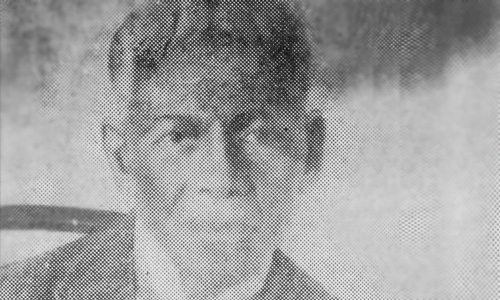
William Austin Harrington Seaton was born on 6 December 1860 at Sandy Point. His parents were both trained primary school teachers so he received his early education at home. At nineteen he was offered the charge of the St. Augustine’s Infant School located at the Figtree end of Pump Bay.
Young William started taking an interest in blacksmithing hoping that it would lead to qualifications in mechanical engineering. However, he was of delicate health and his parents discouraged him from pursuing this career. Instead he practiced the less physically strenuous trades of tailoring and shoemaking becoming especially proficient in the latter. In 1883 Seaton was invited to St. Thomas to join a relative who intended to proceed to Panama where the Canal was being cut by the French. But this plan was soon abandoned as health conditions in the canal zone left much to be desired. He therefore opted to stay in the Virgin Islands and practice his trade.
While in St. Thomas he became a chorister and Sunday School teacher at All Saints Anglican Church. Through the recommendation of the rector he was able to find employment as a clerk at the British Consulate. A few month later the sexton at All Saints died and Seaton was persuaded to take on the supervisory role with an assistant to do the daily tasks. At this time the Danish Government had decided to increase the staff employed at the schools for boys and Seaton secured the post of second master at Dober. Eventually he was licensed as a lay reader of the Diocese of Antigua and had to give up his teaching post. However he did keep in touch with educational work and when the Headmistress and her assistant at the Dober Girl’s School went on leave he was asked to fill in for both. He was also often asked to accompany the Inspector of schools on his rounds. Temporarily, he filled the position of Head Teacher at St. George, Tortola but refrained from accepting the post when it was offered to him as a permanent position. He later joined the staff of the Society for the Propagation of the Gospel and was appointed catechist in charge of St. Mary, Virgin Gorda. This meant that he had to function as Head Master of the Primary School and Registrar of Births and Deaths.
In 1893 Seaton returned to St. Kitts to visit his mother, his father having died in 1887. Finding her in poor health, he decided to stay and work with Archdeacon Dodsworth at St. George’s. On the 13th November 1893 he married Priscilla Lavinia Greene-Cleghorn, widow of Thomas Cleghorn. Together they had three children but only the two girls survived, the son having died at birth.
Seaton worked with Archdeacon Dodsworth as his assistant for about a year and then was given the appointment to run the school on Victoria Road. He was a member of the Anglican Church throughout his life and despite many commitments he was seldom absent from Sunday service.
Eventually he was able to enter the commercial field an work for various companies. He was employed in Dominica by the Mondesire Co. Then he returned to St. Kitts and joined the Pickford and Black Steamship Company as Assistant Purser. Later he worked for the firm of J. Ferara until that business wound up. Following the death of Richard Cable in 1915 William Seaton was invited to join the editorial board of The St. Kitts-Nevis Daily Bulletin but because of differences of opinions between himself and the proprietors he terminated the engagment seven months later. Seaton then joined the firm of E. Periera as Assistant Manager and Accountant. By 1928 he had risen to the position of managing director, a post he held until 1931 when the Depression brought it to an end
Seaton earned widespread admiration for his activities on behalf of the Mutual Improvement Society. He was one of the founders that brought the society into existence in 1901. In 1911 he became the editor of The Reporter, the Society’s publication. For more than twenty years Seaton worked hard at keeping the MIS alive. In the 1920s and 1930s he found strong support from Donald F. Matheson and Robert J. Berridge. Together they were seen as a team of sound, honest and wise men who had gained their wisdom through experience. They were the stabilising influence for an upcoming, ambitious generation of young men which included J. Matthew Sebastian, A St. Claire Podd, Hubert Dinzey and J. W. Blackett. In an article published in 1951 on the occasion of the Societies fiftieth anniversary, Edward Margetson described Seaton as the ‘Master Mind’ of the MIS. Commenting on the many times that Seaton had to serve in the Presidency or the Chairmanship of the Society Margetson wrote: It gave a sense of safety to have his finely balanced judgement presiding over our deliberations .
Margetson went on to describe Seaton’s dedication to the success of the Society. He spent his evenings dealing with correspondence and writing articles for The Reporter, the monthly paper of the MIS which he edited. For nights preceding the publication of each issue Mr. Seaton would work till near dawn writing, correcting, sorting, ordering. One wondered how long his physical constitution would bear the strain...Contributions by members were few and far between, which meant that the editor himself was compelled to produce a huge volume of the material required to maintain, not only the standard of the paper, but also its size.
William Seaton was also a Founder of the St. George’s Palm Lodge in 1912 and of Cairo HH. Of Ruth at Sandy Point. In 1917 Seaton was one of the organisers of a new trade union. The police, who saw him as “a man of very considerable intelligence and moderate in conduct and views”, was surprised at his association with Nathan and Wilkes. Seaton said that his reason for his involvement in the Union was a desire to “better the condition of the labouring classes.” The hostility of the Administration, a promise that labourers’ wages would be increased, as well as his reservations regarding some of his colleagues brought Seaton’s involvement in the Union to a quick end.
In 1918 he was Honorary Secretary of the Representative Government Association and when that disappeared he became a very active member of the new Taxpayer’s Association. In 1932 he joined the Workers’ League and accompanied Thomas Manchester to the West Indies Conference in Dominica. Seaton served the League as Vice President and Secretary until his death in 1938.
Bronte Agatha Welsh
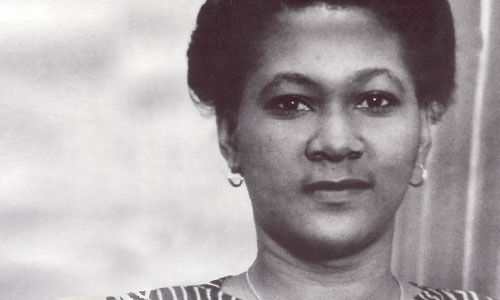
Bronte Agatha Welsh was born in Challengers Village on the 31st December 1918, the first daughter of Evan and Annie Welsh and the second of their six children. Evan was a mason and Anne a seamstress so Bronte and her brothers and sisters grew up in a household were industry was highly valued.
Her early education took place at a small private school. However, at eight years of age she was enrolled at the Basseterre Girls’ School. She remained there until she was twelve years of age and had passed through the 7th standard. Bronte then went on to attend the Girls’ High School. However life as a boarder in Basseterre was proving to be rather difficult and she opted to return to her home and parents in Challengers and to commute daily to school. The lack of regular motor transport made travel tedious and this affected her work so at sixteen years of age she left school without having sat the Cambridge School Certificate examination.
For about three years she engaged in private teaching, but her true love was nursing. She was able to enter the profession at the age of nineteen. For a short while she stopped nursing to work in a pharmacy where she learnt much that would later be of use. In 1942 Welsh joined the staff of the Cunningham Hospital where, for three years she worked as a general nurse until she obtained her certificate in General Nursing and Midwifery and attained the rank of staff nurse. She then branched off into Public Health or Preventive Nursing. She became the first Public Health Nurse to be recognised in St. Kitts.
Her training took her to Trinidad in 1949 where she completed a course on the control of Social Diseases. In 1952 she went to Jamaica for further studies and specialised in the eradication of tuberculosis and obtained the Health Visitor’s Certificate of the Royal Sanitary Institute. A BCG vaccination campaign was launched in 1953. This was a cooperative project by UNICEF, WHO and the local Health Department. In October 1953, WHO Technical Adviser Dr Lampart, arrived in St. Kitts and after two weeks of intense preaparation the campaign was launched the following month. The local team consisted of Dr. B. Ross, Bronte Welch and E. Fergus. 24,366 persons between the ages of one and fifty years of age were tested in St, Kitts, 9,206 in Nevis and 3,961 in Anguilla. A total of 14,056 persons were vaccinated. This was a time when superstition dominated the way of thinking of the ordinary person in the street making it hard for him or her to accept the practices of modern medicine. However intense educational work broke down barriers. The response was very positive and the team completed its mission by March 1954.
In 1954 Welsh obtained a British Commonwealth Scholarship funded by the British Red Cross to study at the Queen’s Institute of District Nursing. During this course she learnt how to adapt hospital methods to the varied conditions found in people’s homes.
On her return to St. Kitts she was appointed Supervisor of Public Health Nursing and in 1957 she became the first local nurse to hold the position of Superintendent of Public Health Nursing. In 1963 Welsh was again in England studying Public Health Administration at the Royal College of Nursing in London. Her nursing career meant involvement in professional organisations such as the Nurses Association, the Civil Service Association and the Red Cross. Welch was instrumental in negotiating a pension for midwives and in lifting the restrictions that deprived married women from obtaining training overseas.
Welsh retired from the Government Service in 1971 and emigrated to the United States Virgin Islands. She attended college in order to obtain the necessary credits for appointment in the nursing field there. On completion of her studies, she worked at the East Health Centre in St. Thomas and was eventually put in charge of a new project initiated by the Federal Government of the USA.
Tragedy struck in 1979 when a fall injured Welsh’s spine. Surgery proved unsuccessful in restoring her mobility and after some two years of treatment and therapy, she returned to St. Kitts confined to a wheel chair. However her spirit remained indomitable as she piloted her wheelchair to church services, ceremonies in Warner Park and other gatherings. She was determined to show that disability was no excuse for withdrawal from society.
Welsh remained a lively conversationalist and gladly shared her recollections about her profession with friends and relatives. Finally she put it all on paper in the form of a booklet entitled Nursing - A Calling or a Career. The proceeds from this little publication went to assist the Society for the Handicapped in the purchase of a van for transporting the physically challenged.
Bronte Welsh died in August 1997.
Frederick Theophilus Williams
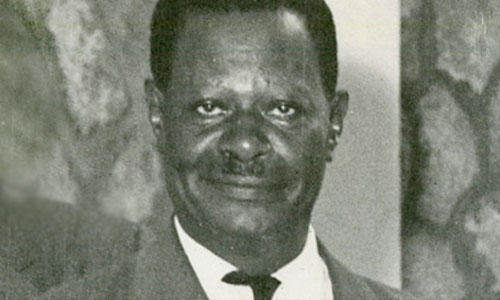
Frederick Theophilus Williams was born in St. Paul’s on the 10th November 1906. His parents were Edmund Williams, a labourer and his wife, Phoebe Ann. As a child he attended the school run by Sophia Jane Thomas and joined the St. Paul’s Parish Choir. At an early age he moved to Basseterre where he became an apprentice in the carpenter’s trade in the workshop of his brother, Charles, who was a building contractor.
In hope of bettering his prospects, Williams travelled to Aruba where he spent a few years. In the 1930s he became involved with others of like mind in improving the conditions of workers in St. Kitts and joined the Workers’ League. He served on its Board of Directors and following Manchester’s death in 1943, he became its president. He was in the forefront of agitation for new laws relating to the formation of Trade Unions, the Right to Vote and Workmen’s Compensation but his presidency was overshadowed by the stronger personality of Robert Bradshaw who was president of the Union and vice-president of the League and who became the spokesman for both organisations.
As a result of the activities of the League, the St. Kitts-Nevis Trades and Labour Union was organised in 1940. F.T. Williams held the post of Treasurer of the union for many years and did not hesitate to financially assist the fledgling organisation when its own funds were wanting. He also served as chairman of the Tradesmen and Allied Workers Section. His diplomacy in handling disputes won him high regard in the sphere of industrial relations.
In 1952, Williams was elected to the Legislature and in 1956 with the advent of the Ministerial System he was appointed Minister of Social Affairs and later of Communications and Works. In 1966 he was appointed Minister without portfolio and given the role of Chairperson of the Central Housing Authority. He was also a Director of National Bank. Yet Williams remained a simple man at heart and he often was the subject of jokes which depicted him as a person inexperienced in the social graces.
F.T. Williams died at the JNF Hospital on the 8th February 1977 after a very short illness. He was survived by his wife Agnes, three daughters and two sons.
Stanley Theodor Sebastian
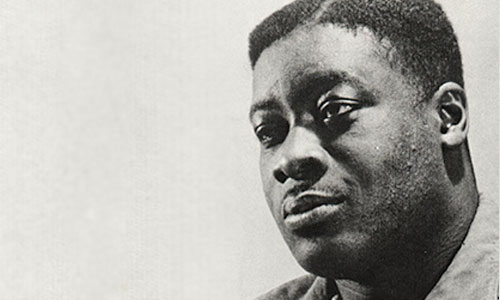
Stanley Theodor Sebastian was born on the 28 December 1920. He was the son of and Christobel Richardson and James Matthew Sebastian. He grew up in Newtown in his mother’s household. At an early age he learnt how to move in various social circles. From his mother he acquired a friendliness towards all with whom he came in contact. His father, on the other hand, challenged him to be outstanding.
Young Stanley received his foundation in education at the Basseterre Boys’ School then under the guiding hand of the head master, Samuel Beach. It was also here that he first met his brother Cuthbert. The two were to become lifelong friends who admired and stood up for each other. In 1936, he sat the first year Pupil Teacher Examinations. He was, then serving as a pupil teacher at Palmetto Point and later advanced to the position of Assistant teacher. An acquaintance of his remembered him riding to school on his bicycle dressed in short pants and jacket with a split in its tail which was then quite out of fashion. The sniggers of passers-by at his unconventional clothing did not bother the young man. He was not going to be tied down by rules.
Following a course in Public Health, Sebastian was employed as an inspector assigned to Gingerland, Nevis. He gradually gained experience in the fields of Sanitation and Water by working closely with the men in charge. Sebastian developed an interest in the specialised field of Public Health Engineering. His studies in this area took him which took him to Trinidad and Puerto Rico. Later, he was awarded a scholarship to pursue engineering at the University of Manchester where he won a bronze medal for his academic performance. In 1949, he obtained his commission as a surveyor for the presidency and in 1951 he held the appointment of Field Technician in the Public Health.
In 1959, the World Health Organization awarded him a fellowship which he used to obtain a Masters of Science degree from John Hopkins University in the United States. This enabled him to join such distinguished professional organisations as the Institute of Public Health Engineers, the Institute of Water Engineers, The Royal Society of Health and the American Water Works Association.
Stanley Sebastian returned home as a Public Health Engineer. He found that a great deal of work was waiting to be completed but often had to deal with very basic problems. Public health nurses found in him a champion who made it possible for them to carry out their work by providing them with basic necessities such as tables and chairs for clinics.
It was during a course in Trinidad that he met Medea. She and his sister Rupertha had become friends while undergoing teachers’ training but she had left education and entered upon a career in surveying. They became good friends and finally lifelong partners in marriage.
In St. Kitts Sebastian put his qualifications to good use. As a civil servant he became known for being straight forward, energetic, and loyal. He had a great sense of humour and a tenacity for getting the job done. In 1956 he was called upon to take up the post of Water Engineer as nobody else could be found to fill the vacancy. This meant that Sebastian had to be released from the Health Department. It was within this field that he found his crowning achievement - the laying of the water main leading from Wingfield River to Basseterre. At the time this allowed one million gallons of water per day to reach town effectively eliminating water shortages except in serious drought conditions. He also had to visit Anguilla on a number of occasions to deal with the water problems in that island. The men he worked with found him to be unassuming, willing to give advice, and down-to-earth both in manner and speech. Sebastian insisted that the department worked as a team and won the admiration of all. Later he was assigned to the Frigate Bay project as Development Engineer.
Sebastian’s interests, spanned a wider spectrum of intellectual and cultural involvements. His professional career must have been, in part at least, responsible for his interest in fossils. But Stanley Sebastian also had a love of music, in particular he enjoyed the Negro spirituals. He taught himself the piano, sang in the Moravian Choir and became an authority on ballroom dancing. At the first St. Kitts Arts Festival of 1964 he organised a group of Morris Dancers.
Stanley Sebastian served as a member of the Board of Directors of the St. Kitts Public Library, was president of the Mutual Improvement Society and took an active interest in sports giving a great deal of support to the Netball Club. From 1962 he was a Director of the St. Kitts Workers’ League
Stanley Sebastian died on the 18th June 1969.
National Archives
Government Headquarters
Church Street
Basseterre
St. Kitts, West Indies
Tel: 869-467-1422 | 869-467-1208
Email: NationalArchives@gov.kn
Website: www.nationalarchives.gov.kn
Follow Us on Instagram

